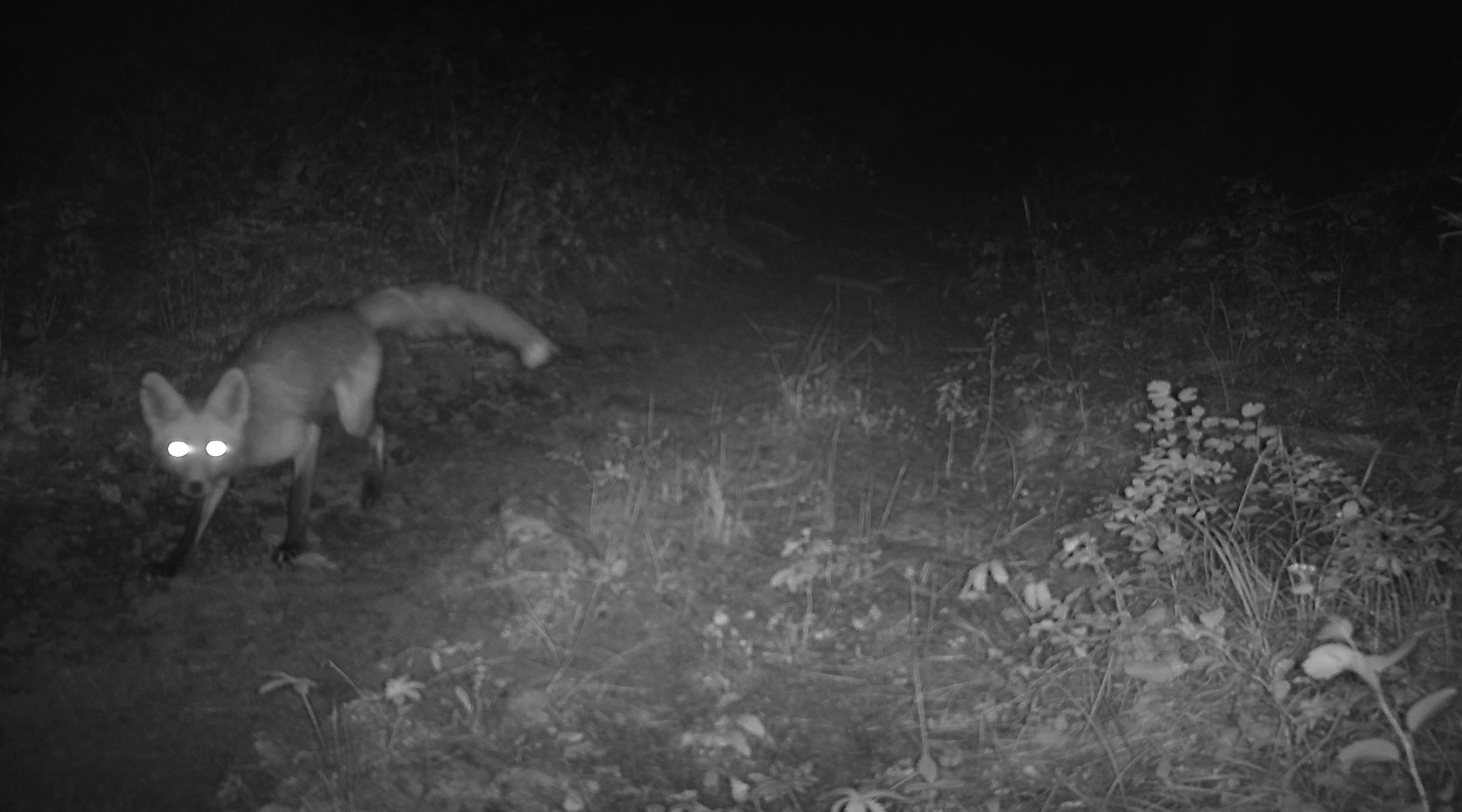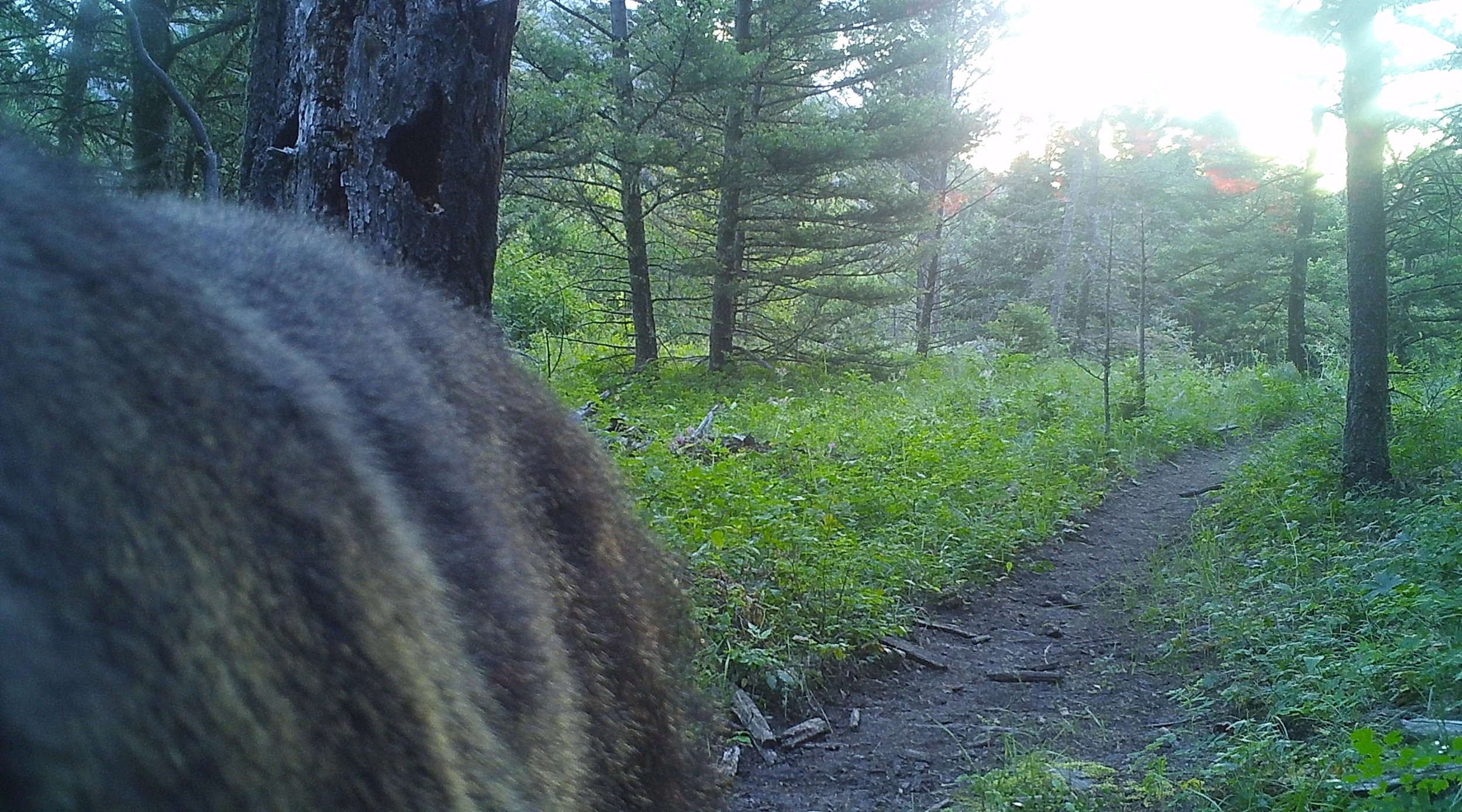On Tuesday, August 6th, I was checking cattle in an upper permit section that is accessible by logging road. At 7800ft, the mornings warm up a little slower than down below in the basin and around 9:40am I came around a corner and ran into a foraging grizzly bear. The bear had been eating mushrooms that were growing on the side of the road and he responded in a way that the majority of bears that I have encountered over the past decade react. He took off running as fast as he could down the logging road. Adolescent bears that are in their first year or two off their sow will sometimes be more curious but even they run. I hope that all that read this blog keep in mind that bears not being habituated to human presence protects both the bears and those of us that are in this country.
What do you see when you’re out range riding?
I start my rides in Tom Miner Basin which is around 5800ft and I ride up to 8000ft when in permit area. There are a few different ecosystems within the areas I ride which include marsh, closed forest, open forest, mountain meadows, riparian areas, lakes, and arid prickly pear cactus country. Lower in the basin I run into elk, white tailed deer, coyotes, bald eagles, sandhill cranes, badgers, gophers, black bears and the occasional ermine. As I ascend to higher country the animals I have seen include elk, coyote, wolf, snowshoe hares, black bears, grizzly bears, chipmunks, ermine, marmots, grouse, and great grey owls.
What do your trail cameras capture?
When I selected places for trail cameras I chose locations that I have commonly seen tracks throughout the grazing permit season that was near water sources and in areas where cattle directly overlapped. My favorite location is a well-used wildlife travel corridor. Due to the topography, the trail is one of the easiest routes of passage through a steep, rocky area so as a result funnels wildlife through it. My trail camera has captured animals I also have seen on the trail such as marmots, coyotes, bears, elk, and cattle but has also captured animals I have not seen such as foxes and skunks.
What can the trail camera and observations tell us?
The trail camera lets us know how many species might be using a certain area and when. It is clear that grizzly bears, black bears, and cattle are all using the same area. In addition, encounters such as stumbling into a great grey owl or running into a grey wolf lend more knowledge about how the ecosystems are being used on different levels. I may see plenty of bear tracks but I know the number of bears I see is lower than the number the tracks I find indicate. The trail camera also lets me know when wildlife may be simply passing through or if it is inhabiting an area. This knowledge is useful for cattle management in grazing allotments on forestry permits.
Several animals have reacted to the trail camera’s presence with curiosity, others oblivious, and the fox was the only animal that reacted with alarm. A bull elk, several cattle cows and two grizzly bears found the trail camera to be interesting and investigated it leaving photos of their noses and ears, mostly foggy photographs from them licking the lens.
When bears enter late hyperphagia, if there are cubs around, or if there is a carcass involved bears are more aggressive and that baseline fear of humans is important. Those three examples are the only times I have encountered bears that did not pack their bags and head out of town the second I ran into them. It does not bother me at all to work alone as a range rider because I have what I jokingly refer to as my four-legged coworkers. I have traveled into country that I have no problem going into solo with my horses but would feel highly uncomfortable hiking with only one other person into- horses make quite a lot of noise traveling through country and often detect the presence of larger wildlife long before we as people can. My horse picked up on the presence of the grizzly before he was visible and my horse was far more interested in the blooming thistles than the bear that was running from us as fast as he could.
-Sabrina Bradford, Tom Miner Range Rider
As a result of early hyperphagia, bear activity is increasing within the forestry permit grazing areas





